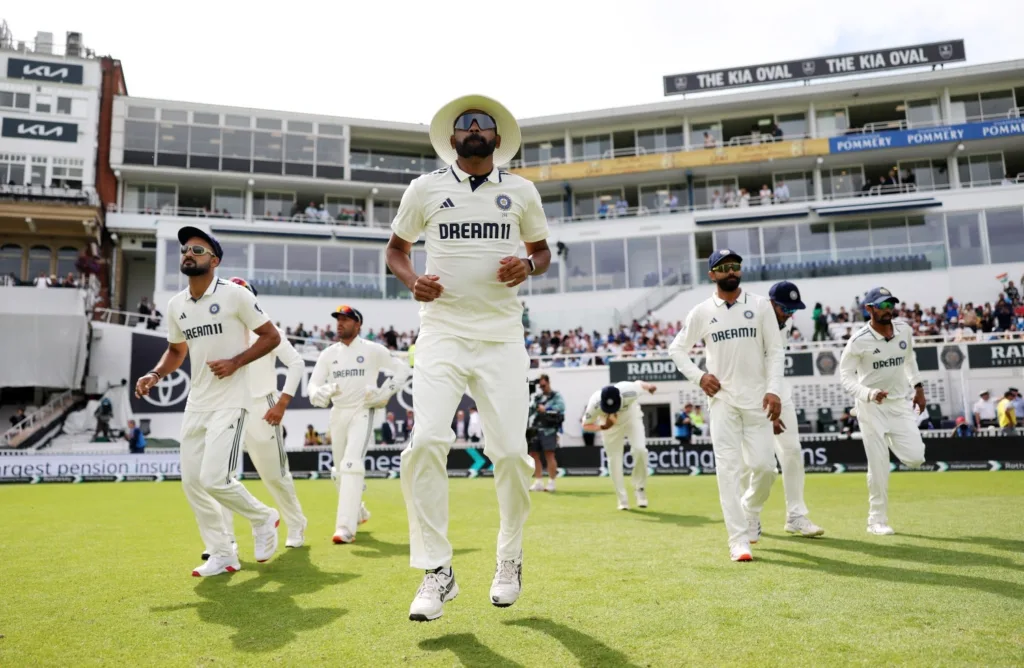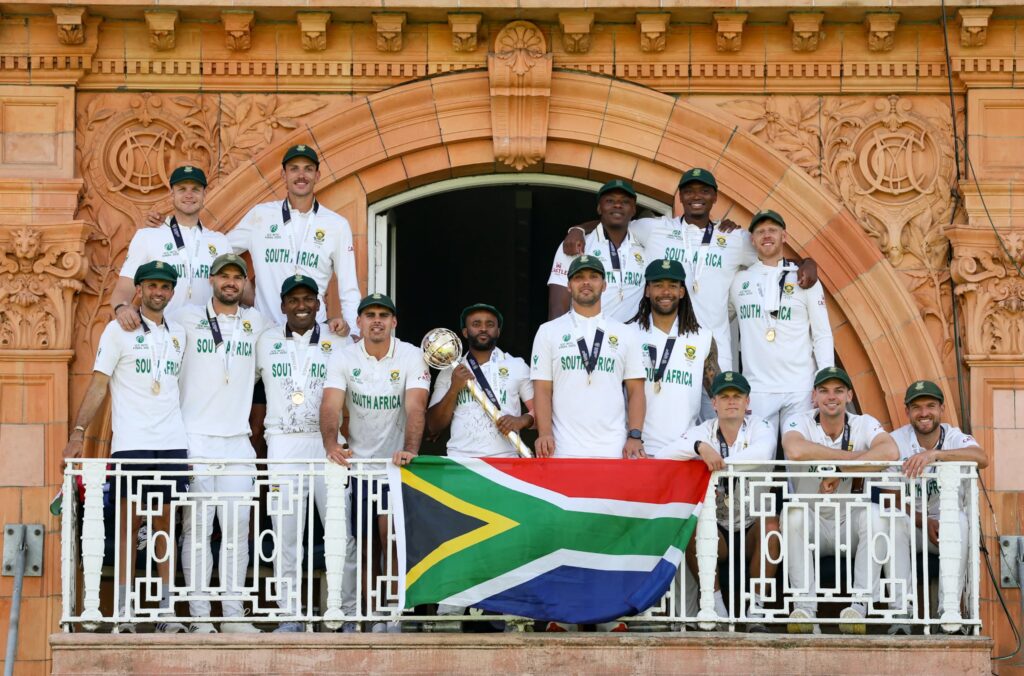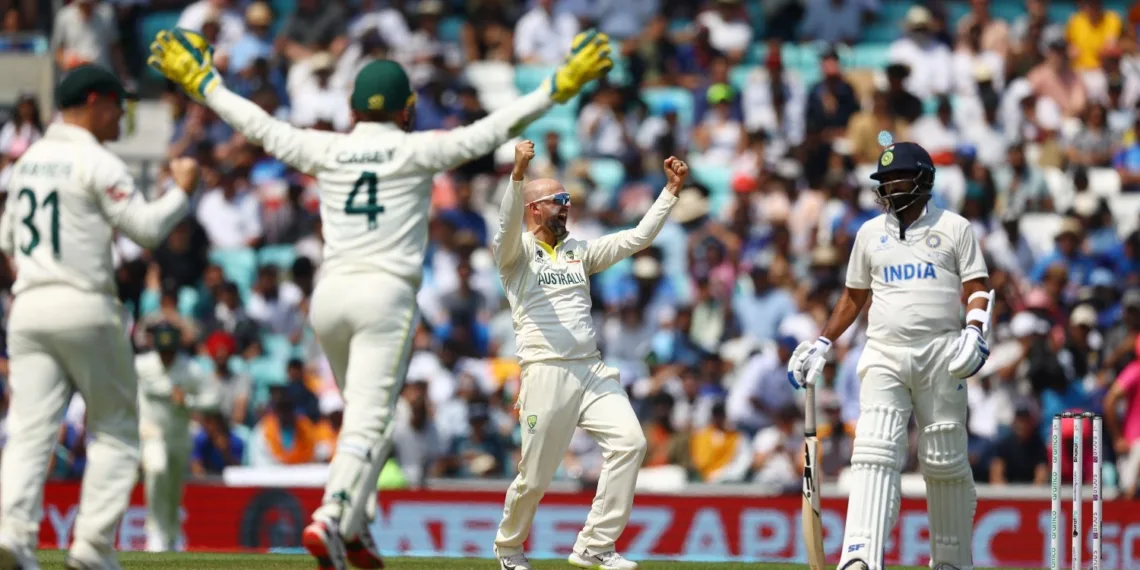The International Cricket Council has abandoned plans to split the World Test Championship into two divisions after the proposal failed to secure widespread support during meetings in Dubai last week. The next cycle, beginning in July 2027, will instead feature all 12 Full Member nations competing in a single expanded league, with Afghanistan, Zimbabwe, and Ireland potentially joining the existing nine teams in what represents a significant expansion of test cricket’s premier competition.
Table of Contents
Why the Two-Tier System Failed
A working group led by former New Zealand batter Roger Twose examined various proposals to restructure the championship format, with a two-tier system emerging as one of the primary options under consideration. The concept, which has surfaced periodically in ICC discussions for over a decade, aimed to create competitive balance by separating nations into different divisions based on performance and resources.
| Proposed Two-Tier Model | Why It Failed |
|---|---|
| Division One: India, England, Australia, New Zealand, South Africa | Financial concerns about relegation from top teams |
| Division Two: West Indies, Sri Lanka, Pakistan, Bangladesh, others | Opposition due to reduced opportunities against big nations |
| Promotion/Relegation System | “Big Three” unwilling to risk financial impact |
| Financial Distribution Support | India, England, Australia unable to agree on funding model |
The collapse of the two-tier proposal stemmed primarily from irreconcilable financial concerns. It had been mooted that India, England, and Australia could support those in division two through a financial distribution mechanism, recognizing that teams relegated to the lower tier would face significant revenue losses from reduced matches against cricket’s biggest drawing cards. However, those discussions never progressed beyond preliminary stages as the complexities of creating an equitable funding model became apparent.
The Big Three’s Financial Fears
England and Wales Cricket Board chief Richard Thompson articulated the fundamental objection that doomed the two-tier system during an interview with the BBC in August. His comments revealed the stark reality that even cricket’s wealthiest nations fear the financial consequences of relegation.
“We wouldn’t want, as England, we may go through a fallow period, and that means, what, we fall into Division Two and we don’t play Australia and India?” Thompson stated candidly. “That couldn’t happen. There has to be a sense that common sense needs to play out here.”

This admission exposes the uncomfortable truth underlying test cricket’s governance structure. While promotion and relegation systems work effectively in domestic leagues and some international sports, cricket’s financial model depends heavily on guaranteed bilateral series between the sport’s traditional powerhouses. England versus Australia, India versus Australia, and India versus England generate the majority of broadcasting revenue that sustains the entire cricket ecosystem.
The prospect of England potentially being relegated and losing guaranteed Ashes series or matches against India was simply untenable from a commercial perspective. Similarly, Australia and India face internal pressures to maintain their revenue streams, which would be jeopardized by relegation to a division that excluded matches against each other.
Opposition from Potential Division Two Nations
Nations likely to occupy division two mounted equally strong opposition, though for different reasons. West Indies, Sri Lanka, and Pakistan recognized that placement in the lower tier would dramatically reduce their playing opportunities against India, England, and Australia—the very matches that generate the most revenue and public interest in their home markets.
For these cricket boards, already struggling with financial sustainability, relegation to division two would create a vicious cycle. Reduced matches against top nations would mean less revenue, which would further limit their ability to invest in player development and infrastructure, making it even harder to compete for promotion back to division one.
The concerns were particularly acute for Pakistan, whose unique situation of not being able to host international matches in their country for extended periods has already strained their finances. The prospect of also losing regular series against cricket’s biggest nations represented an existential threat to their cricket economy.
The Expanded Single-Division Model
Instead of creating tiers, the working group has proposed expanding the championship to include all 12 Full Member nations in one comprehensive competition. This expansion would potentially bring Afghanistan, Zimbabwe, and Ireland into the next cycle alongside the current nine participants: India, England, Australia, South Africa, New Zealand, Pakistan, Sri Lanka, West Indies, and Bangladesh.
Current vs Proposed World Test Championship Format
| Aspect | Current Cycle (2023-2025) | Proposed Cycle (2027-2029) |
|---|---|---|
| Number of Teams | 9 Full Members | 12 Full Members (potentially) |
| Structure | Single division | Single division (expanded) |
| Minimum Tests Required | Varies by bilateral agreement | Minimum number to be determined |
| Afghanistan Status | Not participating | Potentially included |
| Zimbabwe Status | Not participating | Potentially included |
| Ireland Status | Not participating | Potentially included |
Teams will be expected to play a minimum number of tests during the cycle, though the exact threshold has not yet been determined. This requirement aims to ensure competitive integrity while acknowledging that not all teams can afford to play the same volume of matches due to financial constraints.
The Ireland Funding Challenge
One significant challenge highlighted in the proposal concerns funding for hosting test matches. No extra financial support is likely to be available for hosting tests, which has been part of the struggle for emerging test nations like Ireland.
Ireland’s test cricket journey exemplifies the financial difficulties facing smaller nations. Despite gaining test status in 2017, they have played just ten test matches in eight years. The economics of test cricket make it particularly challenging for Ireland Cricket, which operates with a fraction of the budget available to established test nations.
Test matches require significant investment in venue preparation, player payments, and operational costs, while generating limited revenue unless they’re playing against India, England, or Australia. For Ireland, hosting tests against Afghanistan or Zimbabwe might actually result in net financial losses, creating a disincentive to schedule matches despite their competitive value.
Creating Incentives for Test Cricket
A board director speaking to ESPNcricinfo defended the expanded single-division model by emphasizing its potential to guarantee test cricket opportunities for all participants.

“It guarantees that everyone is playing test cricket,” the director explained. “Those that really want to play the format now have opportunities and there is an incentive for other teams to play them.”
This incentive structure represents a crucial element of the proposal. By requiring minimum test participation and maintaining all teams in one division, the championship creates structural pressure for bilateral agreements that might not otherwise materialize. Traditional test powers cannot simply ignore smaller nations; they must schedule matches with a diverse range of opponents to accumulate championship points.
The Bilateral Scheduling Challenge
The urgency behind finalizing the championship structure stems from countries already having started conversations for bilateral series that will be part of the next cycle. Cricket’s bilateral system, where individual boards negotiate series directly with each other rather than following a centralized fixture list, creates complexity that other international sports avoid.
Football’s World Cup qualifiers follow predetermined pathways managed centrally by FIFA. Cricket, by contrast, requires the ICC to create a championship framework, then depends on individual boards to negotiate bilateral series that fit within that framework while also accommodating their domestic competitions and lucrative franchise leagues.
The 2027-29 cycle will need to balance these competing interests while ensuring the minimum test requirements are met. This balancing act becomes exponentially more complicated with 12 teams instead of nine, particularly when some of those additional teams have limited capacity to host matches or travel frequently.
ODI Super League Revival
Beyond test cricket, the working group also recommended reviving the ODI Super League, which was scrapped following the 2023 World Cup after just three years of existence. The 13-team league, launched in July 2020, aimed to create context for the 50-over format but fell victim to calendar congestion.
“The Super League could help revitalise the 50-over format,” one administrator told ESPNcricinfo. “Maybe the problem is not that the format is necessarily dead, it’s finding the proper structure.”
This acknowledgment reflects growing recognition that ODI cricket’s decline may stem more from structural issues than fundamental disinterest in the format. Without regular competitive fixtures outside of World Cup years, bilateral ODI series often feel like meaningless exhibitions, particularly when played immediately before or after T20I series against the same opponents.
The proposal does not specify how many teams would participate in a revived Super League, which could only return from 2028. This timeline allows for refinement of the concept and integration with the broader international calendar.
T20 World Cup Expansion Debates
While test cricket expands and ODI cricket seeks revival through league structures, T20 World Cup expansion remains controversial. The tournament is set to remain at 20 teams despite pressure from some administrators to incrementally increase participation to eventually reach 32 teams.
Associate members have proposed revamping T20 World Cup qualifying to feature a global qualifier tournament similar to Olympic qualifying pathways. This system would determine final spots and might include not only Associates but Full Members who failed to automatically qualify through rankings.
A global qualifier could provide crucial revenue for Associate nations while appeasing some Asian cricket boards who believe the current regional pathway limits their chances of qualifying. The proposal reflects broader frustrations with qualification systems that some perceive as favoring established nations and certain geographic regions.
What This Means for Test Cricket’s Future
The decision to maintain a single-division championship with expanded participation represents both a missed opportunity and a pragmatic compromise. The two-tier system could have created more competitive matches within divisions while providing a promotional pathway for emerging nations. However, the financial realities of modern cricket made such idealism unsustainable.
The expanded single-division model preserves test cricket’s traditional revenue sources while nominally expanding opportunities for Afghanistan, Zimbabwe, and Ireland. Whether this expansion translates into meaningful test cricket for these nations depends entirely on whether wealthier boards actually schedule bilateral series against them.

South Africa currently holds the World Test Championship mace after winning the second cycle. The next cycle will determine whether the expanded format successfully balances competitive integrity, financial sustainability, and genuine opportunities for all participants, or whether it simply papers over cricket’s structural inequalities with cosmetic expansion.
Read More: ODI Super League Set for 2028 Return After 2023 World Cup Axing Left Format Without Context
FAQs
Why was the two-tier World Test Championship system rejected?
The two-tier system failed due to funding concerns and opposition from multiple nations. England, Australia, and India feared the financial impact of potential relegation, while nations likely to be placed in division two opposed the reduced opportunities to play against cricket’s biggest teams.
How many teams will participate in the next World Test Championship cycle?
The next cycle (2027-2029) will potentially feature all 12 ICC Full Members, expanding from the current nine teams. Afghanistan, Zimbabwe, and Ireland are expected to join the existing participants in a single division.
What is the minimum number of tests teams must play in the next WTC cycle?
The exact minimum number of tests has not yet been determined. The working group has proposed that teams be required to play a minimum number during the cycle, but this threshold is still under discussion.
Will the ODI Super League return?
The ODI Super League is likely to be revived, though it cannot return before 2028. The proposal aims to create more context for the 50-over format, though the exact number of participating teams has not been specified.
What did England’s Richard Thompson say about the two-tier system?
ECB chief Richard Thompson stated that England going through a “fallow period” and falling into division two where they wouldn’t play Australia and India “couldn’t happen,” emphasizing that “common sense needs to play out” in any format changes.








